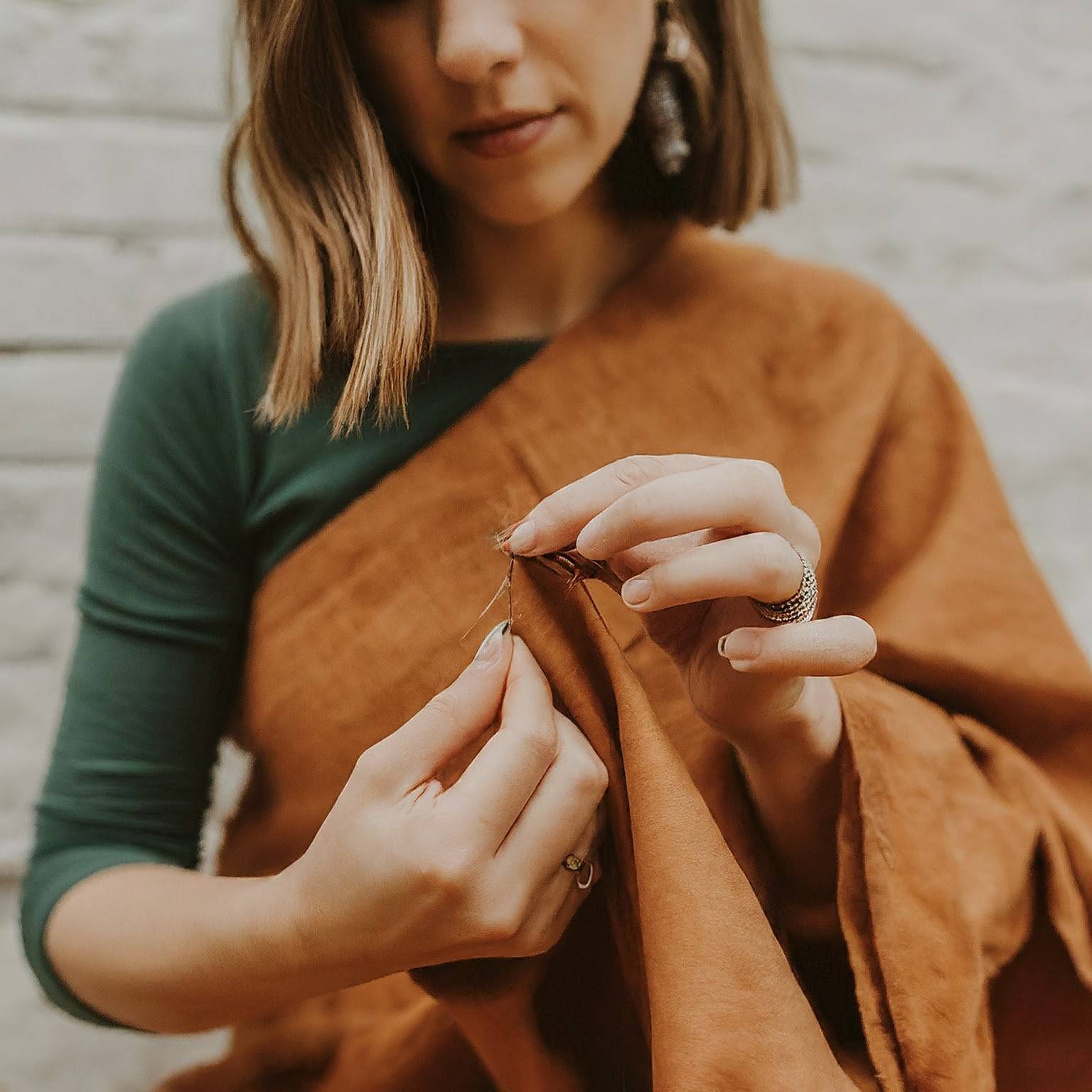In this comprehensive guide, we’ll delve into the rich tapestry of different kinds of stitches in hand sewing from basic to advanced techniques, comparing stitch varieties, exploring decorative patterns, troubleshooting common problems, and addressing frequently asked questions. So forget your sewing machines now.
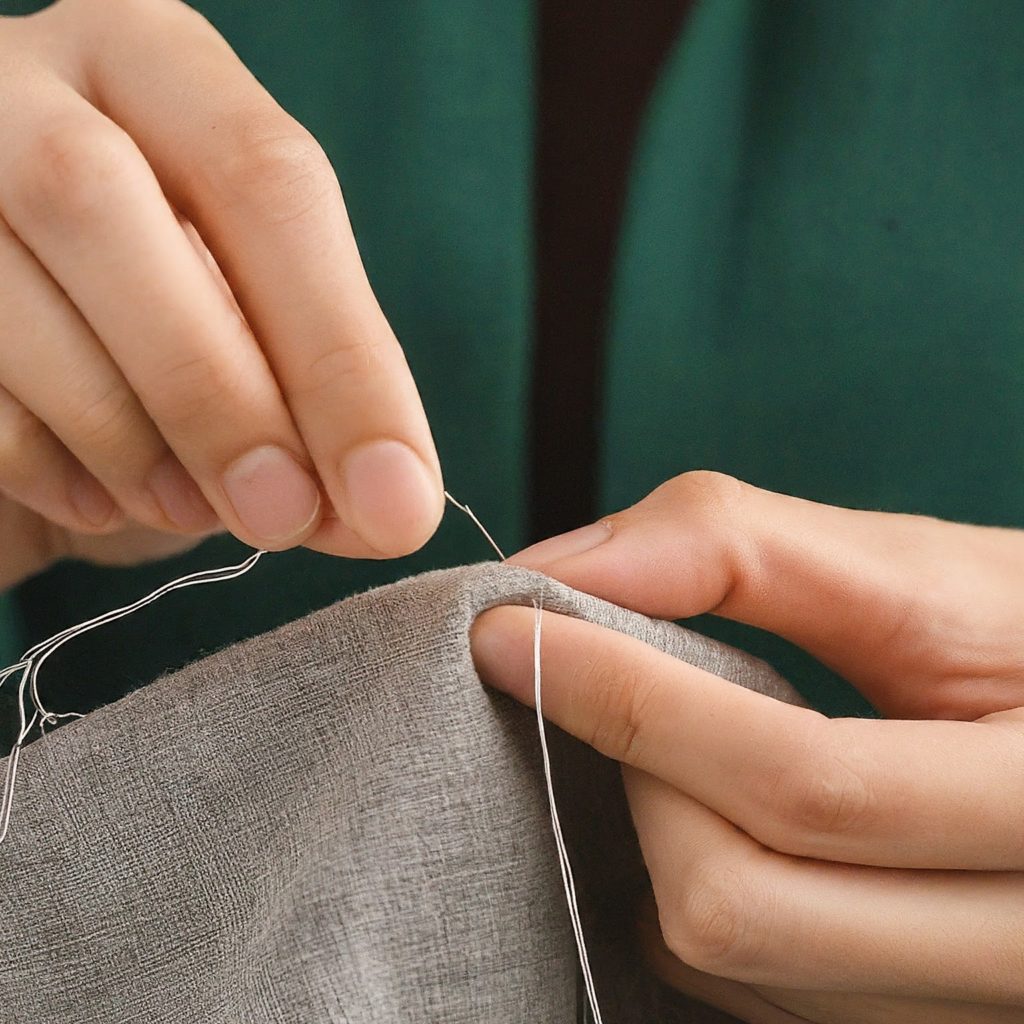
Understanding Basic Hand Sewing Stitches – Types of Hand Stitches
Embarking on a sewing project begins with mastering the fundamental stitches. These basic stitches form the building blocks of sewing, laying the groundwork for more intricate techniques down the line. Let’s take a closer look at some essential stitches every aspiring seamstress should familiarize themselves with:
- Backstitch
- Running Stitch
- Whip Stitch
- Pick Stitch
Backstitch:
The backstitch is a strong and versatile stitch commonly used for seams and topstitching. Its durability makes it ideal for securing seams in high-stress areas such as garment construction or upholstery. To execute a backstitch, bring the needle up through the fabric, then insert it back into the fabric a short distance ahead, forming a straight stitch. Bring the needle up again, this time inserting it into the previous stitch’s end point, creating a continuous line of stitching.
Running Stitch:
The running stitch is one of the simplest and most versatile hand-sewing stitches. It consists of straight, evenly-spaced stitches that run along the fabric’s surface. While it may seem basic, the running stitch is incredibly versatile, suitable for gathering fabric, basting seams, and even creating decorative effects when used with contrasting thread.
Whip Stitch:
The whip stitch is a handy stitch for joining two pieces of fabric together with a neat, finished edge. It’s commonly used in appliqué and hemming projects, as well as for seaming raw edges. To execute a whip stitch, bring the needle up through the fabric layers, then take a small stitch over the edge of the fabric. Repeat this process, keeping the stitches close together to create a secure seam.
Pickstitch:
The pick stitch, also known as the prick stitch, is a decorative stitch often used in tailoring and couture sewing. It involves creating small, evenly spaced diagonal stitches along a seam or edge, adding both strength and visual interest to the finished garment. Pick stitching is commonly seen on jacket lapels, collars, and cuffs, where it adds a touch of sophistication to the design.
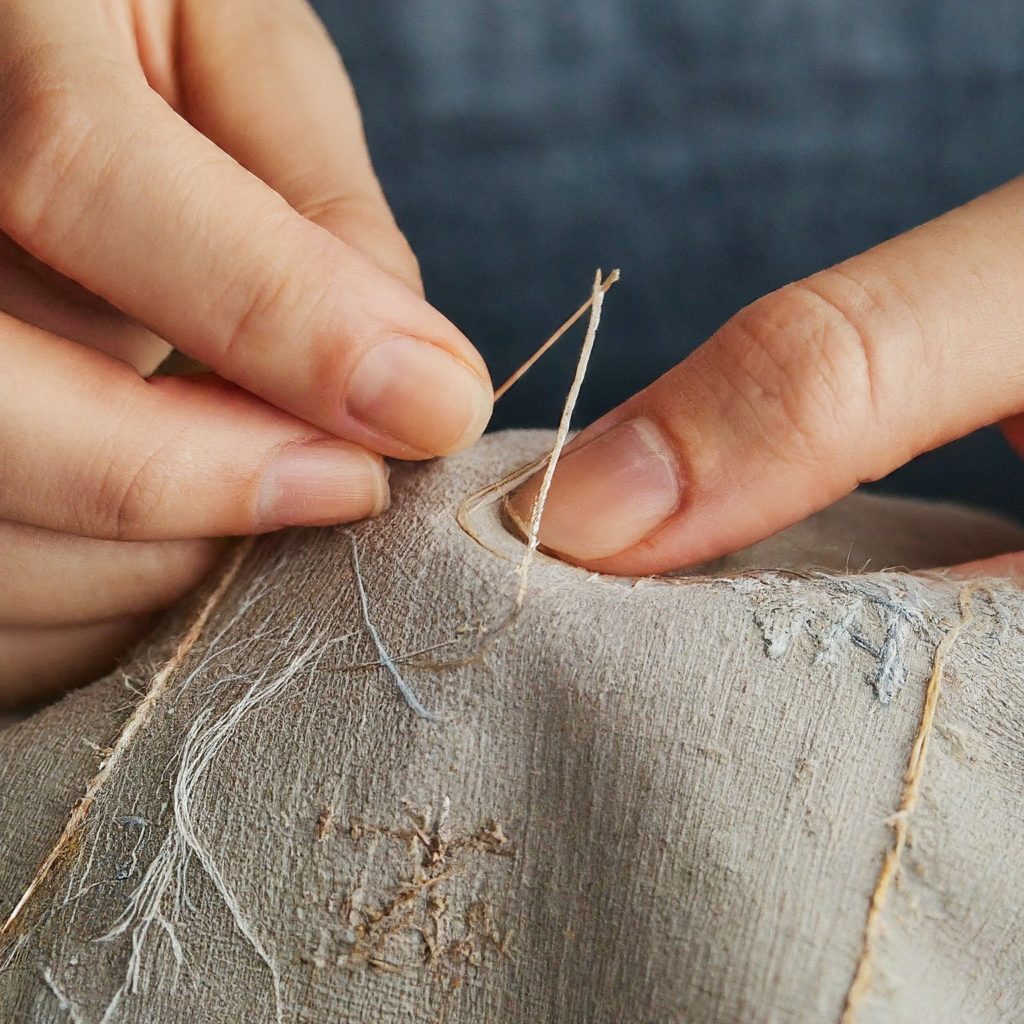
Intermediate and Advanced Hand Sewing Techniques – Types of Hand Stitches
Once you’ve mastered the basics, it’s time to expand your repertoire with intermediate and advanced hand stitching techniques. These stitches add depth, texture, and intricacy to your sewing projects, elevating them from simple creations to works of art. Let’s explore some stitches that bridge the gap between beginner and expert levels:
- Blanket Stitch
- French Knot
- Cross Stitch
- Catchstitch
Blanket Stitch:
The blanket stitch is a versatile and decorative stitch commonly used for finishing raw edges, appliqué work, and creating decorative borders. Its distinctive looped edge resembles the stitches found on traditional blankets, hence its name. To execute a blanket stitch, bring the needle up through the fabric edge, then take a small stitch diagonally across the edge, bringing the needle back through the loop created. Repeat this process along the edge, spacing the stitches evenly for a neat finish.
French Knot:
The French knot is a charming embroidery stitch that adds dimension and texture to your sewing projects. It’s perfect for creating tiny, raised dots or clusters of knots, ideal for embellishing flowers, eyes, or other intricate details. To create a French knot, bring the needle up through the fabric at the desired location, then wrap the thread around the needle two or three times. Insert the needle back into the fabric close to where it emerged, holding the wraps in place with your thumb. Gently pull the needle through the wraps, forming a tight knot on the fabric’s surface.
Cross-Stitch:
Cross-stitch is a classic embroidery technique that involves creating X-shaped stitches to form intricate patterns and designs. It’s a versatile stitch that can be used on various fabrics and is particularly popular for embellishing garments, accessories, and home decor items. Cross-stitch patterns range from simple motifs to elaborate designs, making it suitable for stitchers of all skill levels.
Catchstitch:
The catchstitch, also known as the herringbone stitch, is a versatile stitch used for hemming and securing seam allowances. Its diagonal stitches form a flexible and durable seam that’s ideal for curved or stretchy fabrics. Catchstitching is often used in garment construction to finish raw edges and prevent fraying, as well as in tailoring to create invisible hems and seams.
Exploring these intermediate and advanced hand-stitching techniques opens up a world of creative possibilities, allowing you to add depth, texture, and personality to your sewing projects. Experiment with different stitches and combinations to discover unique effects and elevate your craftsmanship to new heights.
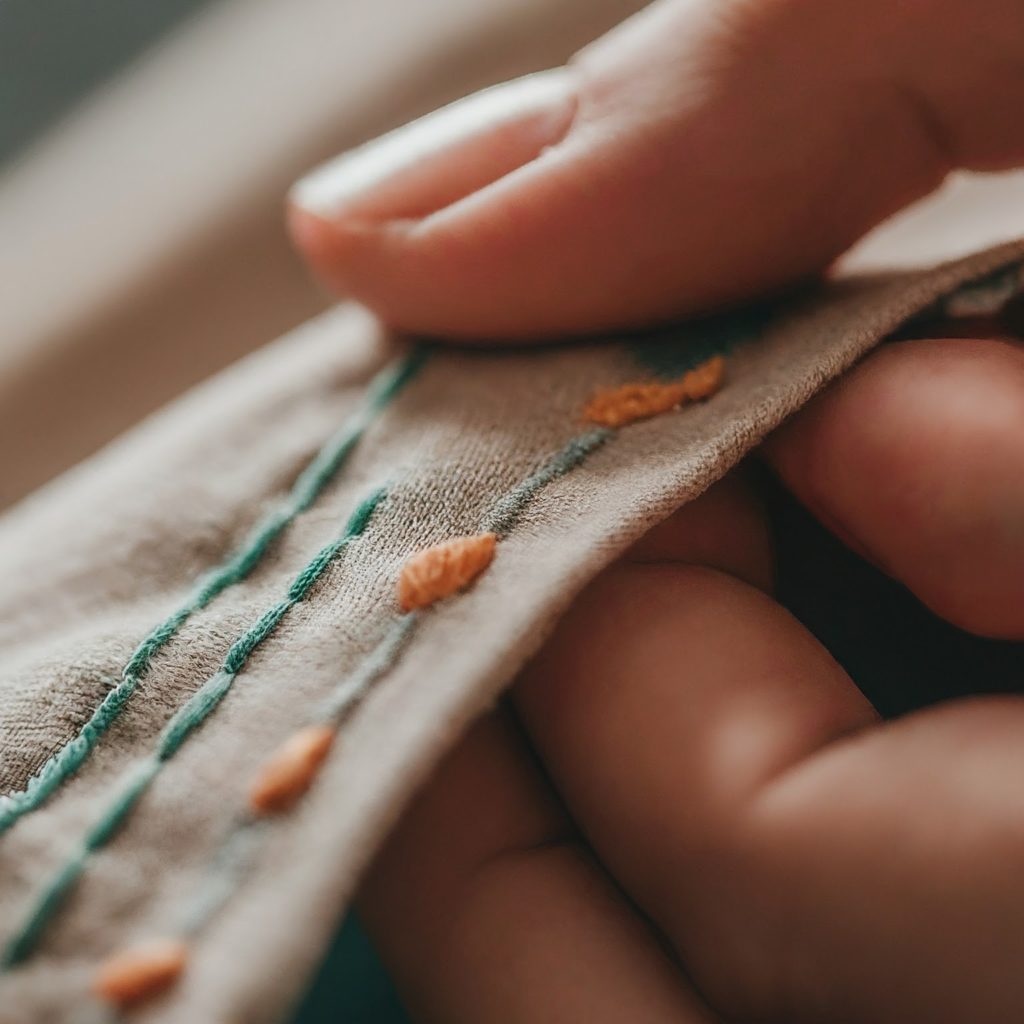
Also Read: Top 5 hand sewing stitches
Comparison of Different Kinds of Stitches in Hand Sewing:
Backstitch vs. Running Stitch:
| Stitch | Backstitch | Running Stitch |
|---|---|---|
| Description | Strong and durable stitch for seams and topstitching | Simple and versatile stitch for gathering and basting |
| Technique | Overlapping straight stitches with no visible gaps | Evenly spaced straight stitches along the fabric |
| Use Cases | Seam reinforcement, topstitching, decorative stitching | Temporary stitching, basting, gathering fabric |
| Strength | Highly durable and secure | Less secure but quick and easy to remove |
| Applications | Garment construction, upholstery, bag making | Quilting, basting, attaching trims |
Whip Stitch vs. Blanket Stitch:
| Stitch | Whip Stitch | Blanket Stitch |
|---|---|---|
| Description | Neat stitch for joining fabric edges with a finished look | Decorative stitch for finishing raw edges and appliqué |
| Technique | Overlapping stitches along the fabric edge | Diagonal stitches with loops along the fabric edge |
| Use Cases | Seam finishing, appliqué, hemming | Appliqué, edging, decorative stitching |
| Strength | Provides a secure and tidy seam | Adds decorative flair and prevents fraying |
| Applications | Joining felt pieces, closing seams | Embellishing blankets, finishing raw edges |
Pickstitch vs. Cross-Stitch:
| Stitch | Pickstitch | Cross-Stitch |
|---|---|---|
| Description | Decorative stitch with small diagonal stitches | Embroidery stitch forming X-shaped crosses |
| Technique | Small diagonal stitches along a seam or edge | X-shaped stitches over a grid of fabric |
| Use Cases | Tailoring, couture sewing, decorative embellishments | Embroidery, cross-stitch patterns, samplers |
| Strength | Adds decorative detail and reinforces seams | Creates intricate designs with colorful threads |
| Applications | Jacket lapels, collars, cuffs, decorative accents | Clothing embellishments, home decor, accessories |
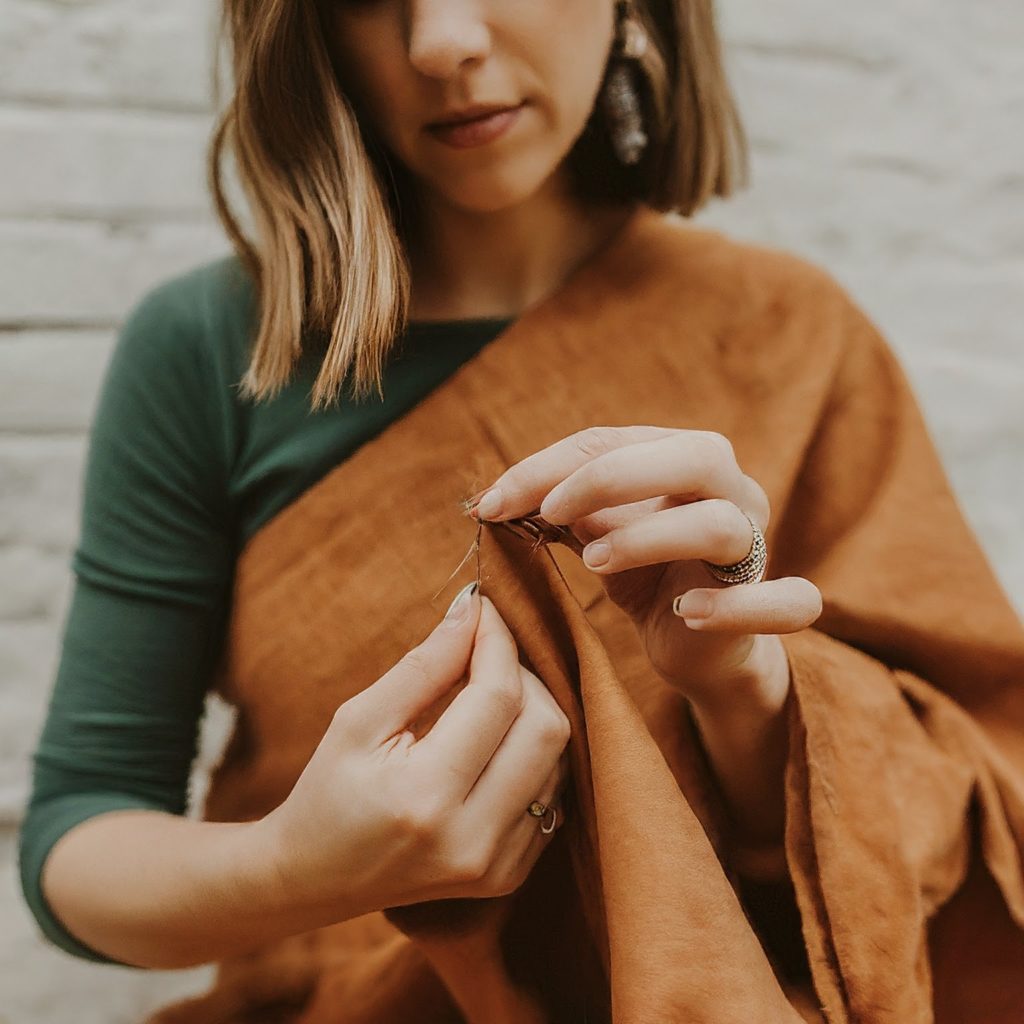
Conclusion:
The world of hand sewing is vast and rewarding, offering endless possibilities for creativity, self-expression, and mindful crafting. By mastering different stitches, you unlock the potential to mend, embellish, and create unique pieces that reflect your style and personality. So, grab your needle and thread, embrace the journey, and stitch your way to joy!
FAQs: Different Kinds of Stitches in Hand Sewing
Q: What are the basic stitches every beginner should learn?
A: The running stitch, backstitch, whip stitch, basting stitch, slip stitch, catch stitch, and blanket stitch are essential building blocks for various projects.
Q: How do I choose the right stitch for my project?
A: Consider the fabric type, project purpose, and desired look. Refer to the stitch comparison chart for guidance, and don’t hesitate to experiment!
Q: Can I sew different fabrics with the same stitch?
A: While some stitches are versatile, it’s generally best to choose a stitch suitable for the fabric weight and texture. For example, delicate fabrics might require finer stitches than sturdy materials.
Q: What are the basic stitches every beginner should learn?
The running stitch, backstitch, whip stitch, basting stitch, slip stitch, catch stitch, and blanket stitch are essential building blocks for various projects. Master these fundamental stitches, and you’ll be well-equipped to tackle a wide range of sewing tasks.
- Running stitch: This versatile stitch, perfect for temporary basting or simple seams, involves weaving the needle in and out of the fabric in a straight line. It’s quick and easy to learn, making it ideal for marking sewing lines or holding fabric layers together temporarily.
- Backstitch: Secure and strong, the backstitch retraces its path, creating a locked stitch ideal for seams that need to withstand stress. This stitch is perfect for sewing seams on garments, bags, and other functional items.
- Whipstitch: For finishing raw edges or attaching appliqués, the whip stitch features tiny diagonal stitches that hug the fabric’s edge. It creates a neat and invisible finish, making it perfect for hems, appliqués, and delicate projects.
- Basting stitch: This loose running stitch marks sewing lines or holds fabric layers together temporarily. It’s easily removable without damaging the fabric, making it ideal for basting darts, pleats, and pockets before permanent stitching.
- Slip stitch: An invisible hero, the slip stitch seamlessly joins fabric edges, often used for hemming or delicate closures. It creates a professional-looking finish that blends seamlessly into the fabric.
- Catch stitch: Similar to the whip stitch, this stitch secures two fabric edges together discreetly, making it perfect for repairs or invisible closures. It’s a versatile stitch that can be used for mending seams, closing hems, and attaching linings.
- Blanket stitch: Adding a decorative touch, the blanket stitch creates a scalloped edge, ideal for blankets, quilts, or finishing raw edges with flair. This stitch adds a touch of personality and visual interest to your projects.
Q: How do I choose the right stitch for my project?
Consider the fabric type, project purpose, and desired look. Refer to the stitch comparison chart for guidance, and don’t hesitate to experiment!
- Fabric type: Delicate fabrics like silk or chiffon require finer stitches like the slip stitch or whip stitch, while sturdy materials like denim or canvas can handle bolder options like the backstitch or herringbone stitch. Consider the fabric’s weight, texture, and drape when choosing your stitch.
- Project purpose: Seams needing strength benefit from strong stitches like the backstitch or herringbone stitch, while decorative edges might call for blanket stitches or decorative variations of basic stitches. Think about the functionality and aesthetics of your project when making your choice.
- Desired look: Consider the stitch’s visual impact – will it blend seamlessly or add a pop of personality? Do you want a clean and classic look or a more whimsical and textured finish? Experiment with different stitches to see what suits your vision.
Q: Can I sew different fabrics with the same stitch?
Here are some general guidelines:
- Delicate fabrics: Opt for finer stitches like the slip stitch, running stitch, or French knots. These stitches create minimal bulk and won’t damage the fabric.
- Medium-weight fabrics: Backstitch, whip stitch, blanket stitch, and catchstitch are good choices for fabrics like cotton, linen, or chambray.
- Heavyweight fabrics: Herringbone stitch, overcast stitch, and buttonhole stitch can handle the weight and stress of thicker fabrics like denim, canvas, or leather.
Remember, practice makes perfect! Experiment with different stitches on different fabrics to get a feel for how they behave and which ones work best for your projects.
Q: Are there specific stitches for embroidery?
Yes! Embroidery is the art of decorating fabric with stitches, and there are countless stitches used to create intricate designs and embellishments. Some popular embroidery stitches include:
- Cross-stitch: This basic stitch creates tiny “x” shapes, often used for geometric patterns and lettering.
- Satin stitch: This smooth and lustrous stitch fills enclosed areas with closely packed stitches, perfect for creating flowers, leaves, and other motifs.
- French knot: This raised decorative stitch adds dimension and texture, ideal for creating berries, buds, or accents.
- Chain stitch: This continuous loop stitch creates outlines, stems, and delicate details.
- Stem stitch: This long, straight stitch outlines shapes and creates lines in embroidery designs.
- Lazy daisy stitch: This simple loop stitch creates small flowers and petals.
These are just a few examples, and there are many more embroidery stitches to explore! Each stitch has its unique characteristics and uses, so experiment and discover what you enjoy creating.

